In Baitadi, monkey menace has forced hundreds to migrate to Tarai and India while it has left hundreds of ropanis of land barren.
Basanta Pratap Singh and Lokesh Saud |CIJ, Nepal
The Dhaulyali village is nestled on the hill above the Mahakali river. The houses, with slate roofs and limestone-painted walls, look bright from afar. On the top of the village lies the famous Tripura Sundari Temple. The Mid-hill highway cuts through the village, stretching from east to west. And the 12 meter wide Mahakali corridor elongates from north to south. The village has easy access to transportation, drinking water and irrigation facilities. Despite all that, however, the village has a tragic story to tell.
Dhaulyali, which falls in Dasharath Chand Municipality-8, is a settlement of 68 houses. But a majority of these houses are empty. As many as 40 families have already migrated from here, leaving their front yards and gardens barren and covered in bushes. Shrubs have covered their fields. A few people one encounters in the villages look dejected. The village was lively until a few years back; today, there’s only a sullen silence.
Farmers used to grow grains such as maize, wheat, black grams, and soybeans. They used to sell it to the Jhulaghat bazaar just across the border for a living. But for the past few years, monkeys have been attacking the crops. They not just destroy crops but also belongings inside the houses. It is because of this that many villagers are forced to migrate. Those staying back are left with few options.
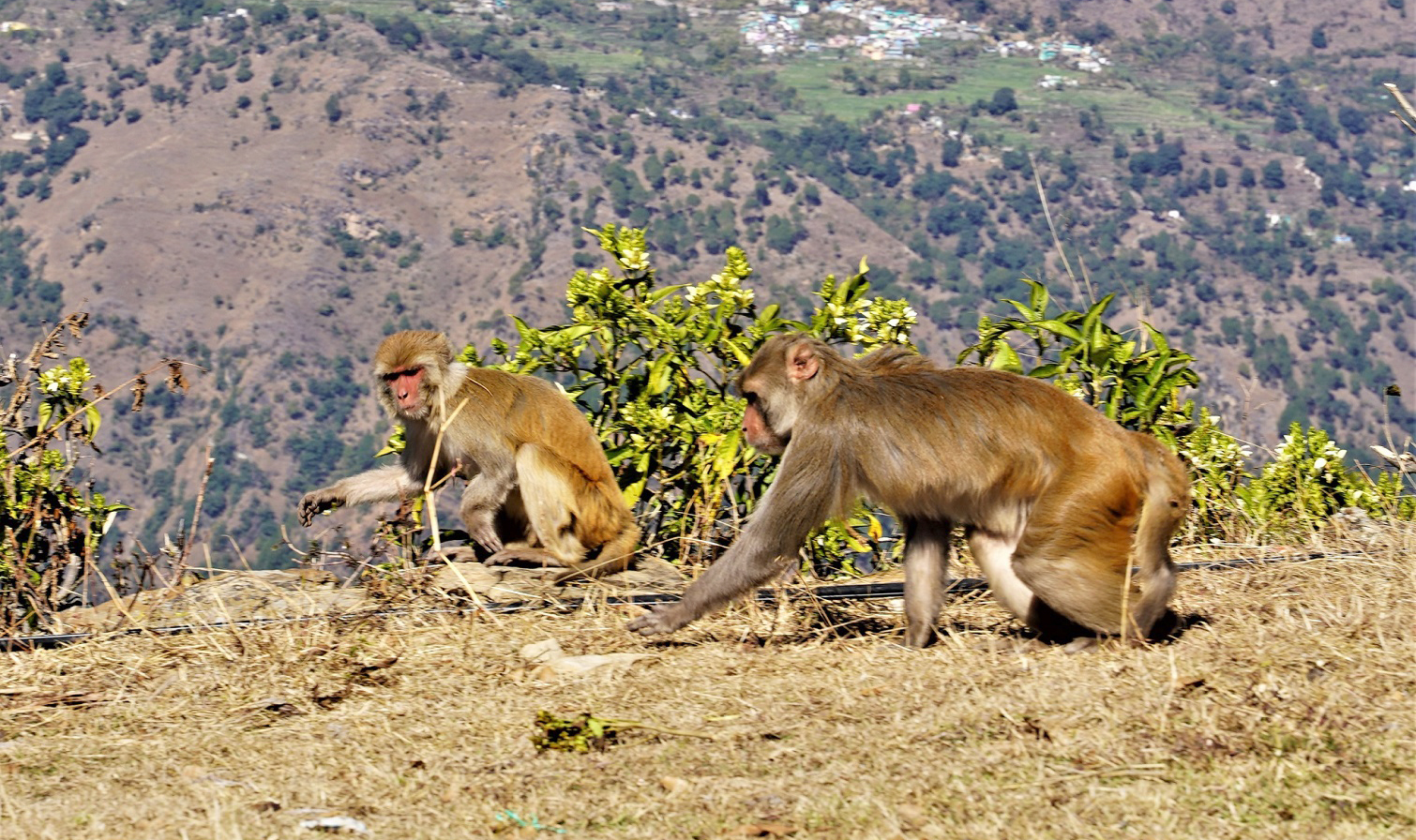
A couple of monkeys at Tripura in Dasharath Chand-8. Photos: Lokesh Saud
“Previously, the monkeys wouldn’t touch the crops in the fields. But these days, they don’t leave those inside the houses either,” Pushpa Bohara, a 50-year-old resident, said. “They wreak havoc—destroying cooked meals and utensils. They won’t leave seedlings in the fields either. They even barge into the houses through roofs and closed windows.”
On Magh 1, the whole of Sudurpaschim province came alive with festivities. Those who had moved abroad for employment had returned. Married women had returned to their maternal homes. Amid all this, the family of Khimram Lawad, from Dasharath Chand-10, left their home early in the morning.
Fed up with monkeys, Lawad, who made a living by farming, had headed off to India with his wife and children. “He was a hardworking person and had made a living through farming alone, until the monkey menace,” said Prakash Lawad, Khimram’s neighbor. “But monkeys began to destroy all he had. After he reckoned it was hard to eke out a living in the village, he left for India. He has asked me to keep watch on his house.”
Khimraj, who CIJ met in India’s Banbasa, said, “I didn’t want to leave the home and farm where I have invested so much but the monkey menace became unbearable. If they were people, we could’ve filed a complaint but what do we do to monkeys?”
Villages in Baitadi that used to be so lively since a decade back are emptying. The fields are being left barren.
Dhaulyali’s neighboring village of Toli too has only five families remaining in the village out of total 15. Goldeu village has only four, while 53 other houses are in dilapidated condition. As many as 35 families have already left Bhatala village, which also falls in Dasharath Chand Municipality-10, while 25 others are ready to migrate, according to Gagan Singh Bhandari, a former ward chair. “The village is now no more,” he said. “It is captured by monkeys.”
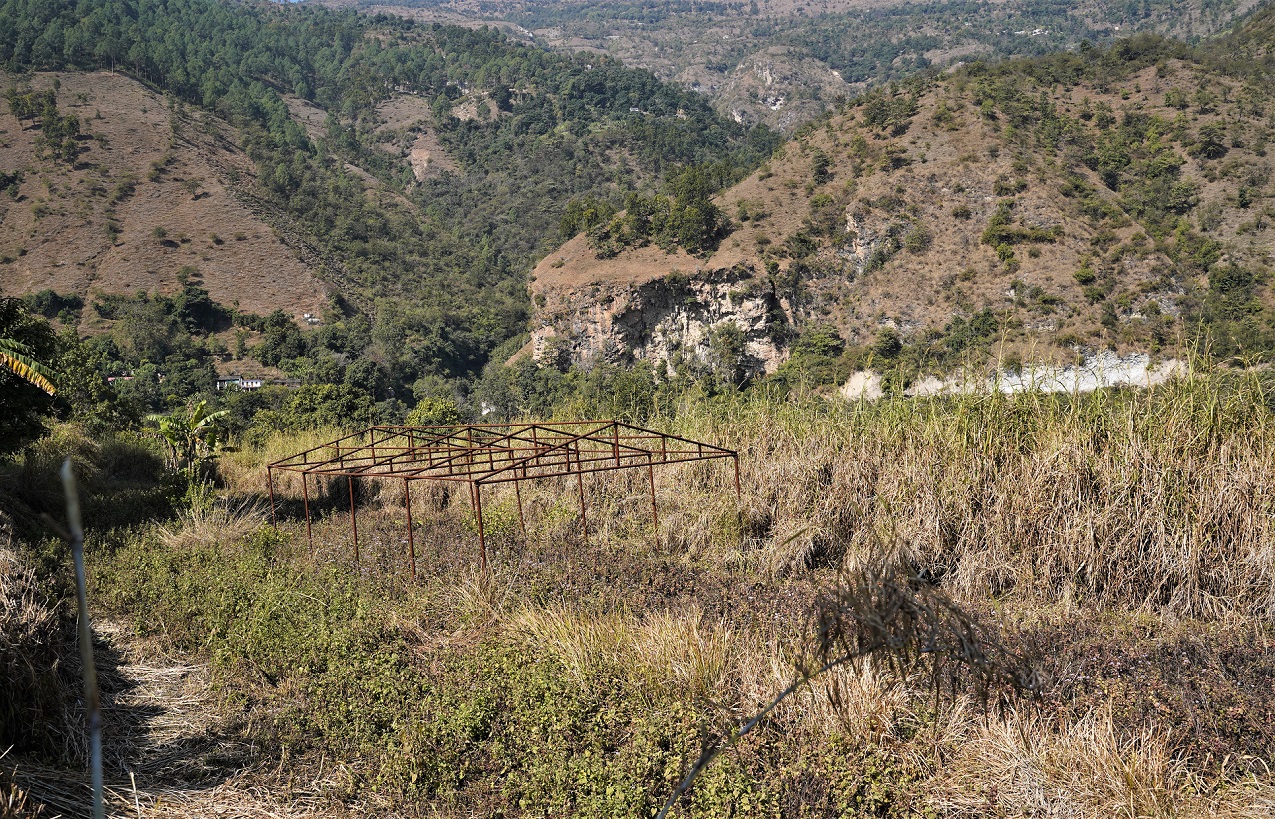
Even though Dambar Singh Thapa of Nalatadi in Dasharath Chand-8 started modern farming, he was displaced by monkey terror.
Likewise, 37 of 51 houses at Talliaayat village in Dasharath Chand Municipality-5 have migrated. The rest 14 houses are manned by the elderly only. Raju Lekhak, a local school teacher, says that only those who have strong faith in gods have remained in the village. He says, “Even though their children have left them, they are staying back with the belief that the house’s gods should be worshiped and not be abandoned.” The elderly don’t hope that those who have left will return. Birapal Damai, 79, says, “My six sons and daughters in law have already left and 20 grandchildren followed suit. I, however, am staying back, because I was born and raised here.”
‘Earlier, we’d sell our produce. Now it’s hard to protect what we purchase’
Until a decade back, the Nalatadi village in Dasharath Chandra-8 was a settlement of 30 households. The village that lies on the banks of Mahakali has a good irrigation system for around 1500 ropanis of land.
Dambar Singh Thapa, who grew fruits and vegetables at 40 ropani land in the village, used to operate a polyhouse. His garden had abundant mangoes, bananas and lemon. But after the monkey terror, his neighbors began to migrate. After the village began to empty out, he too moved out to a rental place in nearby Bhattad.
Dambar, who has still stayed at the village, says, “After villagers moved out, the monkeys targeted me. They not only destroyed crops and fruits in the field but also the goods inside home.” The whole village is empty now, its houses dilapidated and buried in bushes. The village is now home to wild animals.
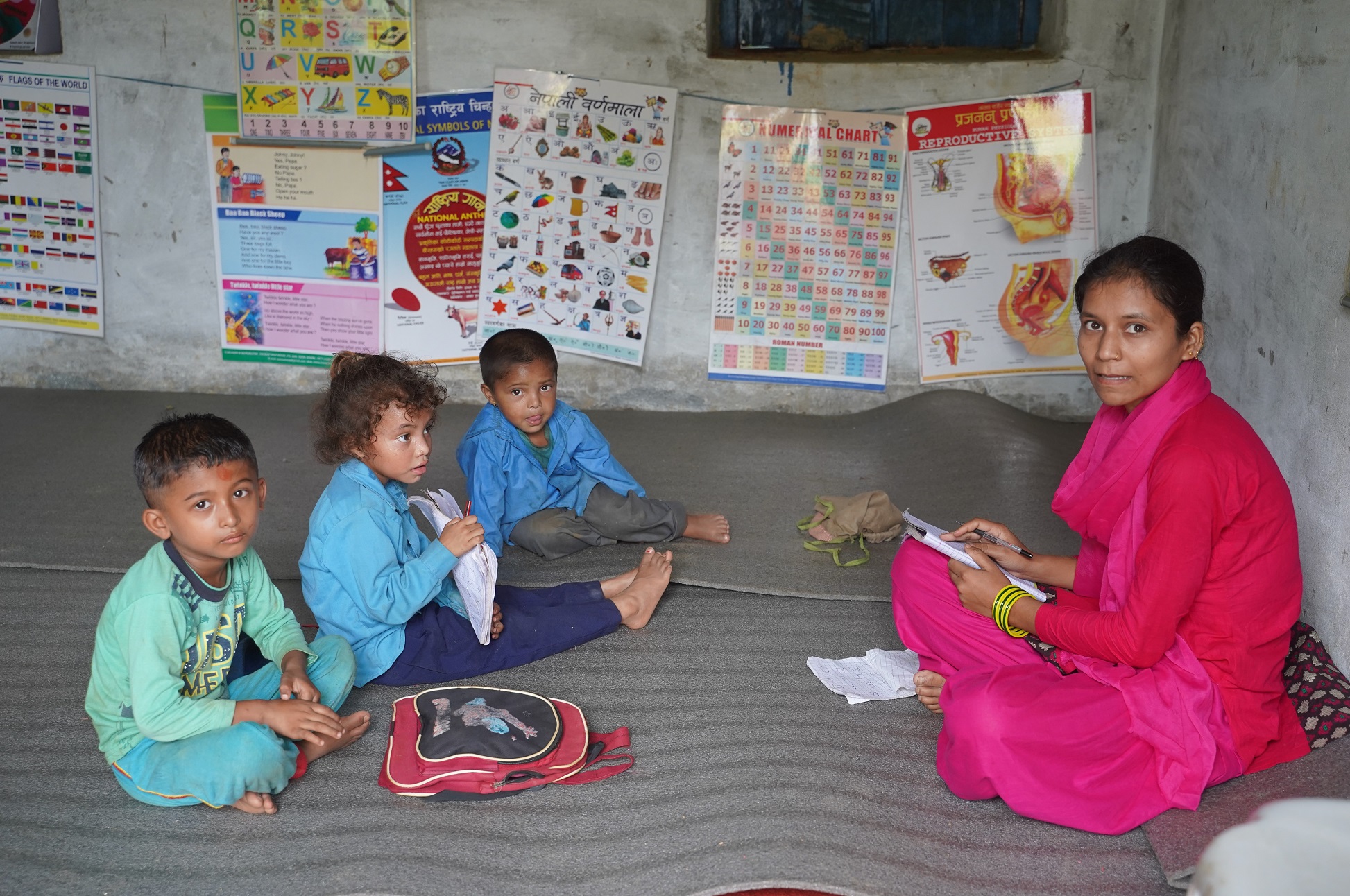
A schoolteacher at Dhaulyali’s Kailapal Basic School.
While Thapa would sell his cash crops previously, he now couldn’t even save the goods purchased from the market. When Leela Guru came to Aathbishi after getting married 15 years ago, all of the villagers would engage in farming. Her family used to grow crops in 10 ropani lands and that would see them through the year. They would even sell the surplus. Leela, who is a ward member of the local unit’s ward 8, says, “The land lies barren now. We can’t even save the edibles we purchase.”
According to local unit’s data, as much as 75,104 ropani land in its four wards lies barren now. Farmers have used only 1323 ropani land but that too gets attacked by monkeys frequently, according to Mahadev Bhatta, a municipal official.
After monkey terror, farmers from Dogadakedar Rural Municipality-4 have also abandoned farming. Harisharan Bhatta, a farmer, says, “We need a whole village to chase away the monkeys that enter our houses.”
Not just crops, the monkeys have even started attacking people. The villagers can’t sit at peace in chautaris either. Surendra Bhatta, a former ward chair, says, “I used to grow as much as 8 quintal maize in my field. The government had declared this place a maize pocket area. But now, I don’t have enough maize to even make a single bread out of it.” According to Bhatta, the monkey menace started from the border area and then spread across the nearby settlements.
Population declines, schools shuttered off
Monkey menace has caused hundreds of people from villages such as Dhaulyali, Sangdi, Pujargaun, Tripura, Pallachaundali, Aaita, Bhatala, Jhaka, Budda, and Khaderi to migrate. It has spread to neighboring Dogadakedar Rural Municipality too.
“It’s normal for those in the hills to migrate to Tarai but that trend was not heard of in our place since the headquarter is nearby,” Narendra Thapa, former chief of the Dasharath Chand municipality, says. “Monkey terror had forced thousands of farmers to migrate.” Of the migrants, those with secured financial situations move out to the Tarai while poor ones travel to India for labor, Thapa adds. “Majority of them migrate to India.”

A general view of the Dhaulyali village.
These villages that lie along the Mahakali river in Nepal-India border are emptying out, causing the municipality’s population to decline significantly. In 2074BS, the Dasharath Chand Municipality had a population of 36,947. The number has fallen to 31,786 in the 2021 census. According to the municipality data, as many as 483 families have migrated from wards 5, 6, 8 and 10 in the past five years. This data, however, is not inclusive of all migrants, says Raju Bista, information officer at the municipality.
Meanwhile, many schools have closed for want of students. Many existing schools have students in single digit. In Kailapal Basic School of Dholeli, for instance, only six students are regular of the 18 who had been admitted. “The residents have already left. How would there be students?” says Manju Thapa, a teacher at the school. “There are six teachers and as many regular students.”
Ranasaini Basic School in ward 8 has shut down. And so have Shanti Basic School, Gyaneshwar, and Jagannath basic schools nearby. As a regular, students from Sangdi village are forced to travel to India for studies. Bikram Bahadur Chand, chief district officer, says that his office has launched a drive to merge schools or close them off entirely.
Monkeys migrating from India
Baitadi’s local residents say the monkeys causing havoc do not belong to Nepal but are actually from India. “We hear that they bring monkeys on trucks from India and leave them at Jhulaghat. And these are the same monkeys creating terror,” says Trilok Singh Bista, ward chair of Dasharath Chand-10.
Bista’s claim is not entirely without basis. In its February 19, 2022 issue, the Times of India carried a news article that stated Uttar Pradesh is releasing monkeys into border areas of Haridwar district, which is near the Nepali border.
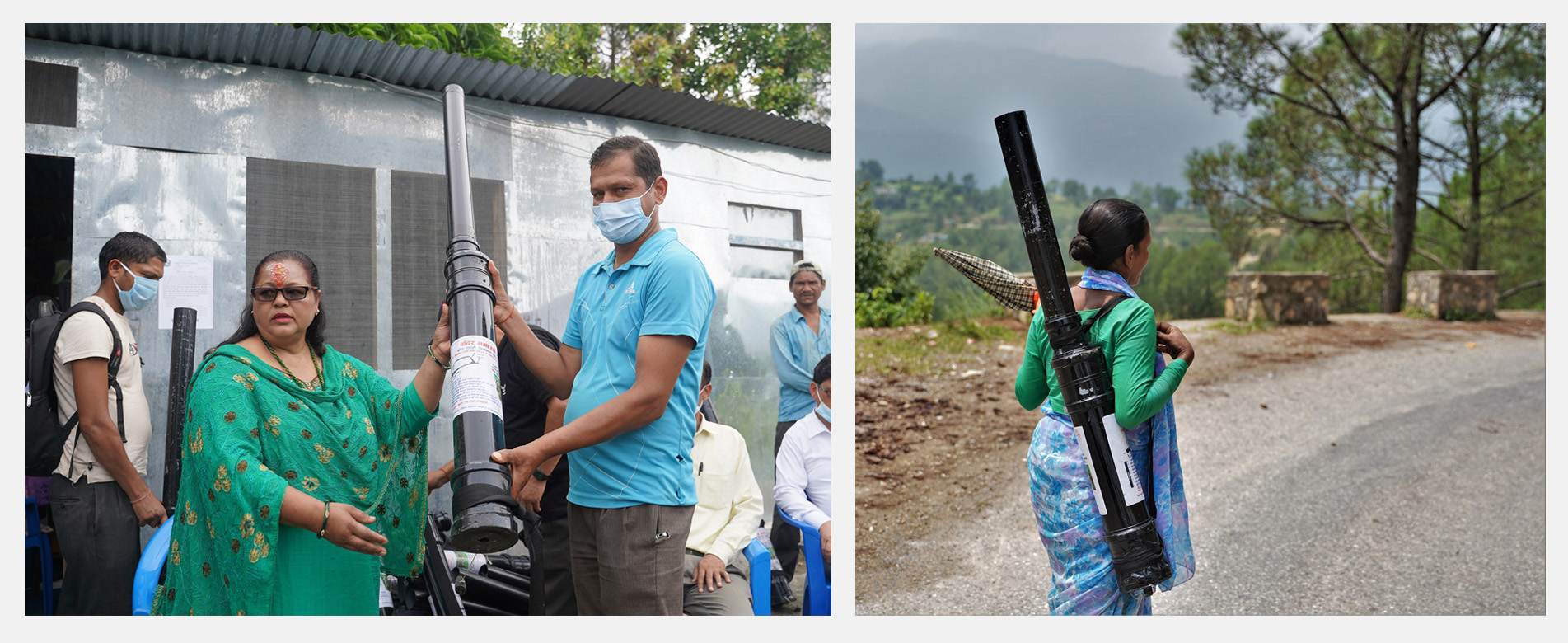
Then Deputy Mayor of Dasharath Chand Municipality Meena Chand distributing the ‘Monkey Gun’ and a local woman walking away with one.
The monkeys incoming of late appear more aggressive, says Basudev Bhatta, a resident of Dasharath Chand-5. “The indigenous monkeys are small and are afraid of people,” he says. “But the new monkeys are big, bearded and unafraid of people.” Moreover, the indigenous species get scared of dogs but the new ones chase the dogs away instead, he added
Govinda Raj Joshi, a resident of ward 6, says that four years ago, he witnessed Indian officials leaving two trucks full of monkeys at Kharkhoda in Pithoragarh-Jhulaghat road stretch. “I was there to get some medicines, and there I saw about three-four people opening the truck’s fence, from where the monkeys escaped and ran into the forest.”
Indian residents and officials also say that monkeys are transported from many Indian villages and are left on the border areas. “I have also heard that monkeys from Haridwar are left in the bordering areas, but I haven’t seen it myself,” Kiran Bhatta, chair of the gram panchayat of Uttarakhand’s Majirkanda, said. “They might be the same monkeys that travel to Nepal.” She added that monkey menace in India and Nepal is similar.
Dr Dharam Singh Mina, additional secretary of forest and ecology department of Uttarakhand state, said that since a decade, hundreds of thousands of monkeys are being caged and reared in a big area at Bandar danda.
He suspects that some of those monkeys at Bandar danda might have escaped from their habitat and gone to Nepal.
Nisha Bhatta, an Indian citizen, says that because of monkey menace, the usually fertile land at the banks of Mahakali in Jhulaghat is no longer so. Another local Hariballav Bhatta says, “Twenty years ago, there were no monkeys here. These monkeys are immigrants.”
Attempts at control
After monkey terror exacerbated in India’s Uttarakhand and Himachal, officials tried to control it by killing them, sterilizing them or leaving them at the bordering areas. But these measures didn’t bear fruit, as international news outlets like BBC and The Guardian state. BBC Hindi writes that until 2018, in Himachal state alone, as many as 143,000 monkeys were sterilized.
Indian officials say that even though there have been several attempts at curbing the phenomenon of monkey terror, they have been only partially successful. Dr Mina says that sterilization of hundreds of thousands of monkeys has helped curb the terror to some extent. He added that of late, monkeys are given contraceptive pills as a pilot project. “But since monkeys give birth twice a year, their population grows exponentially in a short time.”

Fed up with monkey terror, many residents of Dhaulyali have migrated.
Dr Lakshman Khanal, assistant professor of zoology at Tribhuvan University, says that since the monkeys found in both India and Nepal are of the similar species, it’s hard to say whether the monkeys causing terror are indigenous or migrants.
“The monkeys there seem like they are scared of people, who fire guns or slingshots, hence they are more aggressive,” he said. “It may also be that because they are migrants from India, they are uncomfortable with the new surroundings.” Dr Mina also says that the migrant monkeys tend to get more aggressive.
After monkey terror began to displace people, the Sudurpaschim provincial government’s ministry of industry, tourism and environment carried out a study on human-monkey conflict. The study team’s report stated that the monkeys in Baitadi were more clever and aggressive than the usual ones.
The report further states that since those monkeys live around the village year-round, destroy crops and fruits before they mature, and attack the villagers repeatedly, the situation is critical. People have had to stay on alert at all hours and the monkeys are more aggressive towards kids and women, the report says.
The report also mentions the trend in India to transport monkeys elsewhere. That rehabilitation without proper protocol might be counterproductive, not solving the problem but only translocating the conflict, it says.
Dhirendra Bahadur Chand, a wildlife expert who was a member of the study team, says that in Baitadi, the density of monkeys is too high. While the red monkeys are usually found in a group of 30-35, in Baitadi, they are seen in a group of 80-90, Chand said. “This is a rare occurrence,” he said. “It is because of deforestation that monkeys are visiting human settlements.”
The recourse of labs
The local governments have made efforts to control monkey menace but without much success. In its first city council meeting on August 10, 2017, the Dasharath Chand Municipality allocated Rs1 million to control monkeys. According to which, seven months later, a plan was formulated to chase the monkeys away under the leadership of Rajendra Bhatta, a local leader. As many as 400 people, including Mayor Narendra Thapa, chair of ward 5 Narayan Bhatta and other officials, gathered at Kaluwad in the municipality. Most of them had slingshots in their hands. Some had carried weapons like bhala and even guns. All of them had one goal, to chase the monkeys away from the city area to west Mahakali, at around 15 kilometers distance.
In Kaluwad, the campaign was inaugurated with a pooja. Locals with guns shot some monkeys down. The news reached the then CDO Siddharaj Joshi, who instructed Mayor Thapa to stop the campaign. The campaign hasn’t resumed.
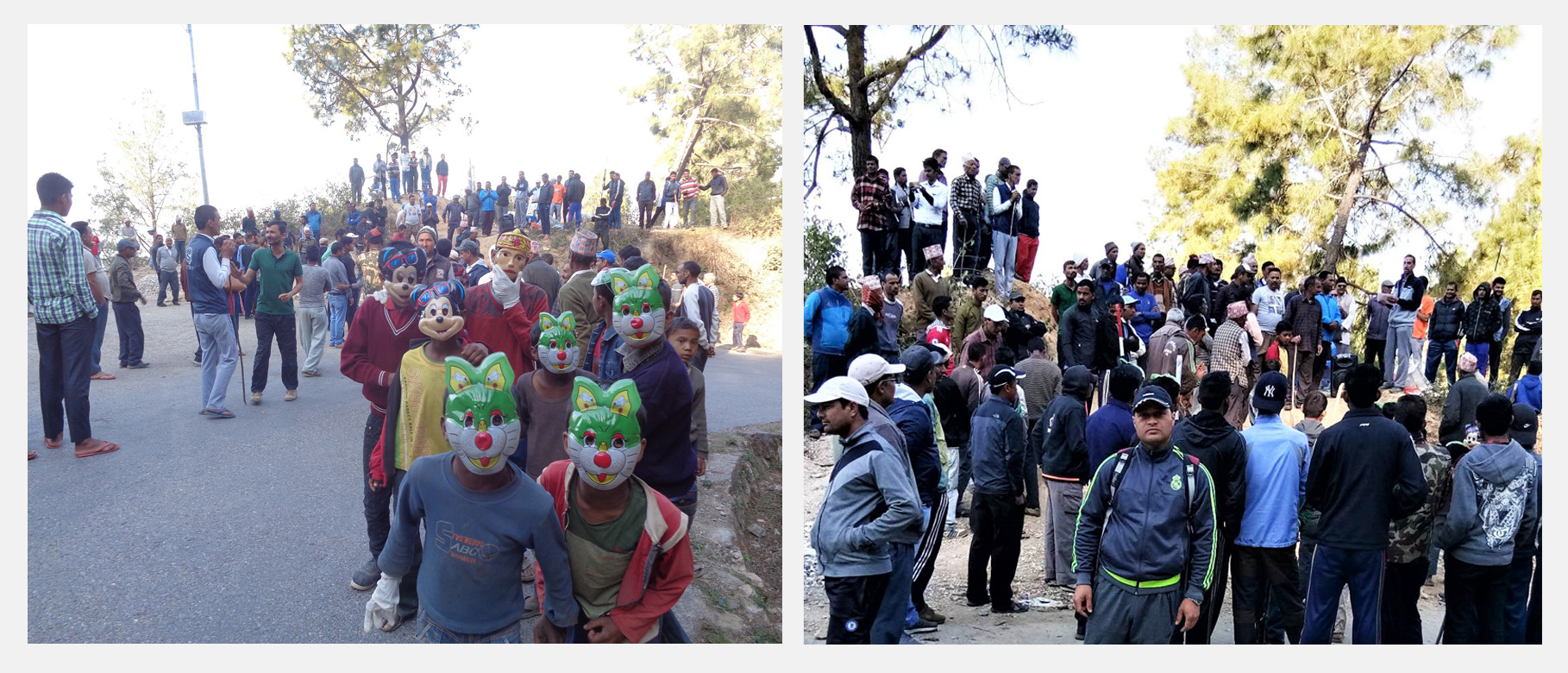
Local residents gather at Kaluwad to chase away monkeys.
In July 28, 2020, Deputy Mayor Meena Chand and other officials gathered at ward 5 office. There were Bolero jeeps with a weapon that looked like gun. They handed over the weapon to the farmers. It was a machine devised by one Bhabishwar Koirala of Syangja’s Bhirkot Municipality called Monkey Gun. The officials distributed 100 such instruments at first and then an additional 25 in another round.
“At first, the monkeys got scared of the machine’s sound and ran away, but not after a few days,” Lekhak, the local schoolteacher, said. “Instead, some locals got injured as they didn’t know how to use the machine.”
The officials even invited experts including Dr Mukesh Kumar Chalise to sensitize locals about the reasons behind human-monkey conflict and their management.
Mayor Pushkar Raj Joshi says that since the conflict is a big problem, his office will move forward by consulting with local residents and experts.
“It seems impossible now to protect traditional crops. We are thinking of using the agriculture budget for an alternative farming system,” Bikram Bahadur Chand, chief administrative officer of the municipality, said. Local youths also support the local unit’s plan. Himmat Chand, a local youth, says that if farms are cultivated with citrus species, the monkeys wouldn’t do much harm to them. He says, “If the local unit, farmers and investors got together to start alternative farming, then we can get around monkey menace.” He also says that grass can be cultivated in barren lands and start goat farming.
Experts, however, say that to curb monkey menace, small zoos can be constructed to rear cattle and each province can establish medical science labs. “If each province started their own labs to study monkeys, even all those monkeys from Nepal wouldn’t be enough,” Dr Chalise, the monkey expert, says. “If not, local units can construct zoos and rear monkeys.”



